外研版(2019)必修第三册Unit 3 The world of science Understanding ideas 说课稿课件(共20张PPT)
文档属性
| 名称 | 外研版(2019)必修第三册Unit 3 The world of science Understanding ideas 说课稿课件(共20张PPT) | 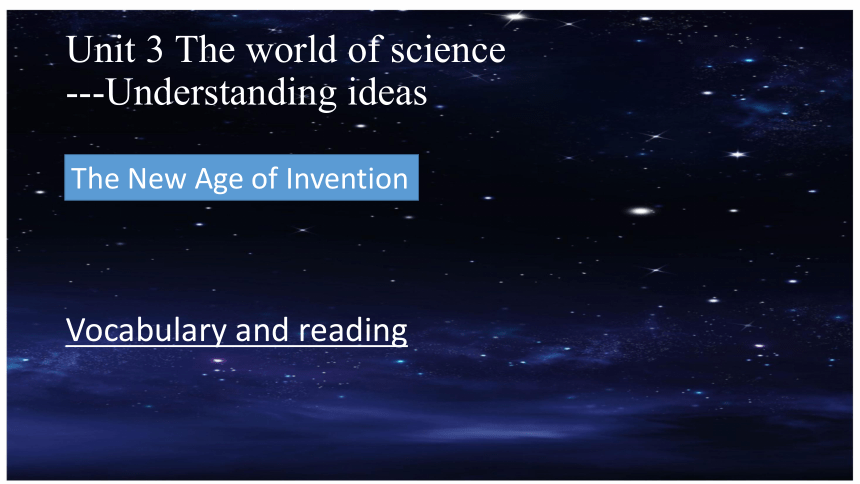 | |
| 格式 | pptx | ||
| 文件大小 | 3.8MB | ||
| 资源类型 | 教案 | ||
| 版本资源 | 外研版(2019) | ||
| 科目 | 英语 | ||
| 更新时间 | 2023-08-30 18:42:06 | ||
图片预览


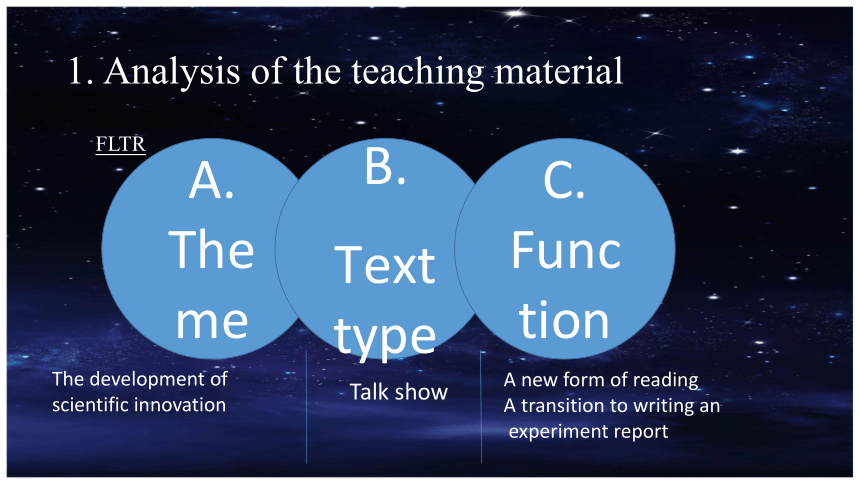
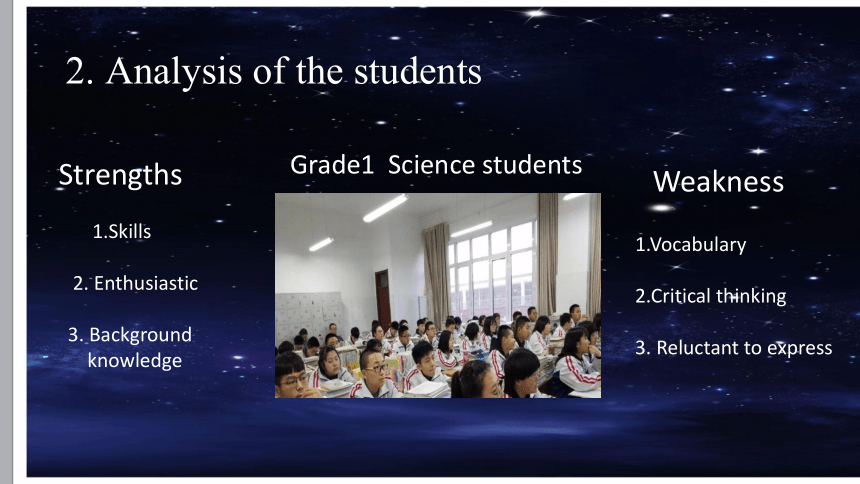
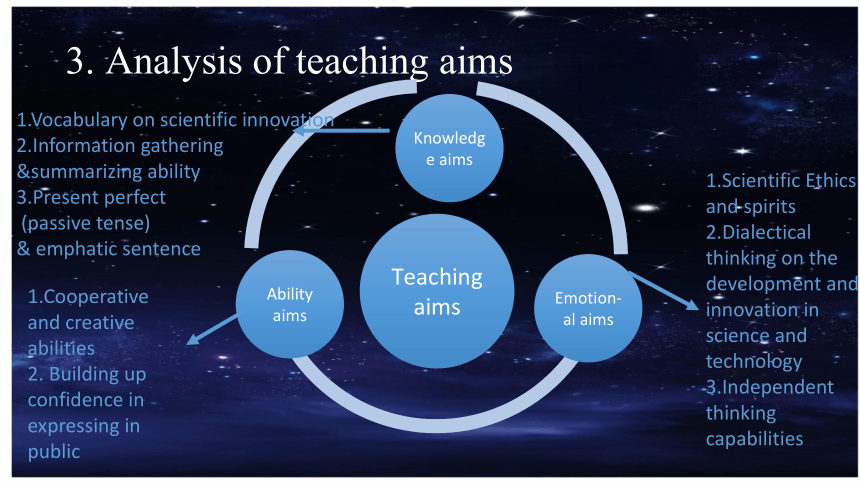
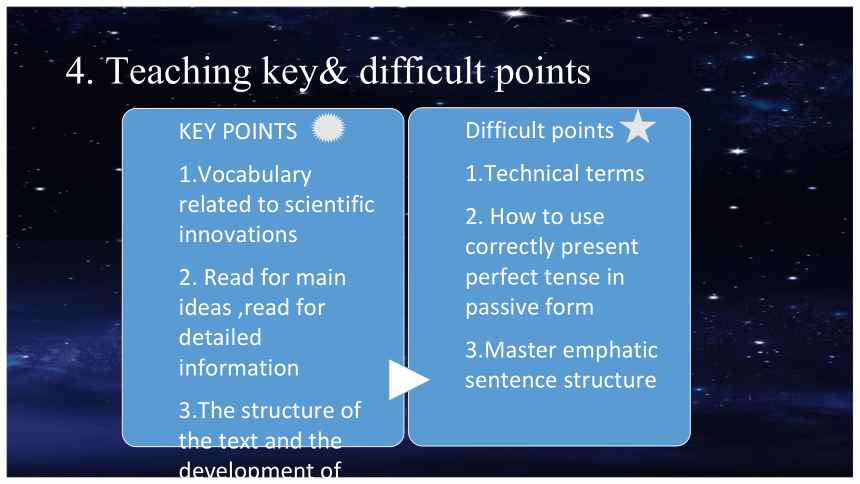
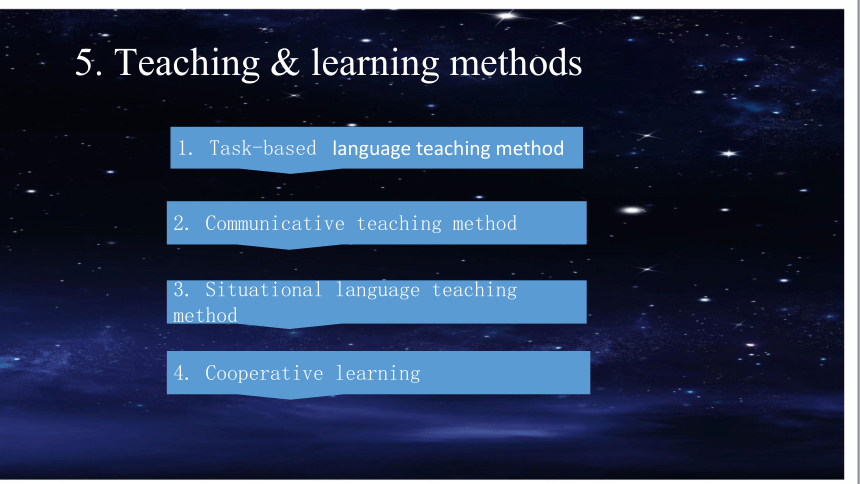
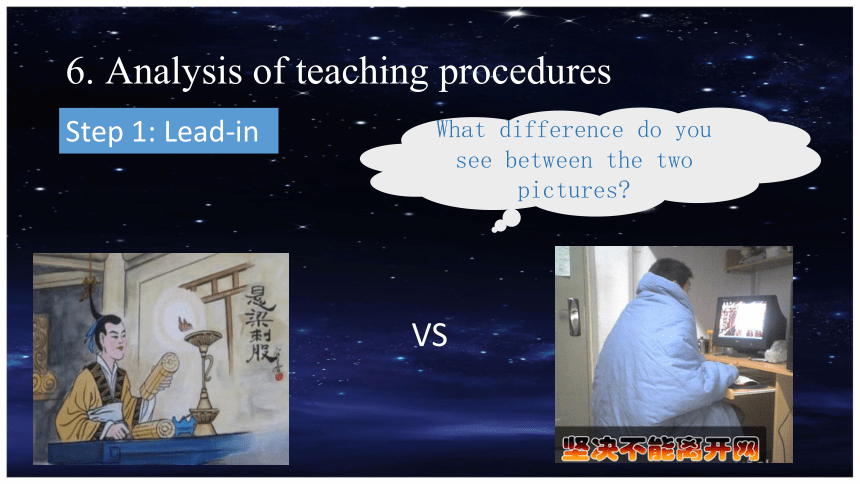
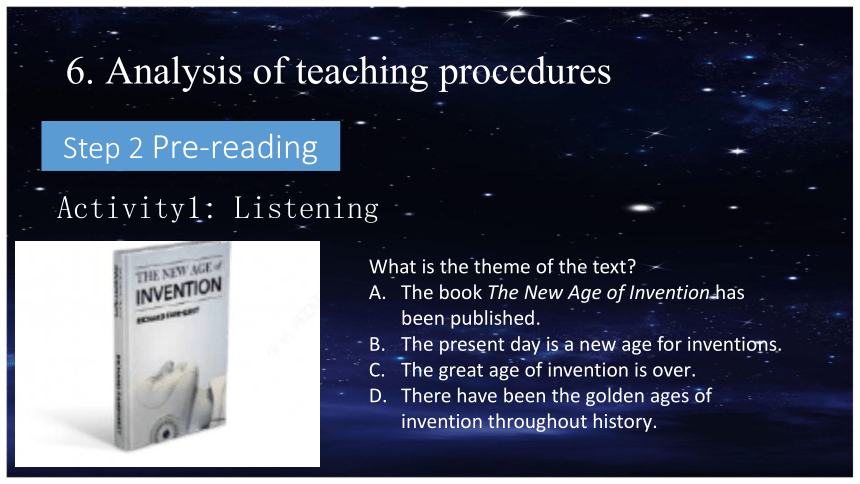
文档简介
(共20张PPT)
Unit 3 The world of science
---Understanding ideas
Vocabulary and reading
The New Age of Invention
CONTENTS
1. Analysis of the teaching material
2. Analysis of the students
3.Teaching aims
4. Key points and difficult points
5. Teaching and learning methods
6. Teaching procedures
7. Blackboard layout
1. Analysis of the teaching material
The development of scientific innovation
Talk show
A new form of reading
A transition to writing an
experiment report
FLTR
2. Analysis of the students
Grade1 Science students
Strengths
1.Skills
2. Enthusiastic
3. Background
knowledge
Weakness
1.Vocabulary
2.Critical thinking
3. Reluctant to express
3. Analysis of teaching aims
1.Vocabulary on scientific innovation
2.Information gathering
&summarizing ability
3.Present perfect
(passive tense)
& emphatic sentence
1.Cooperative
and creative abilities
2. Building up confidence in expressing in public
1.Scientific Ethics and spirits
2.Dialectical thinking on the development and innovation in science and technology
3.Independent thinking capabilities
4. Teaching key& difficult points
5. Teaching & learning methods
1. Task-based language teaching method
2. Communicative teaching method
3. Situational language teaching method
4. Cooperative learning
6. Analysis of teaching procedures
Step 1: Lead-in
What difference do you see between the two pictures
VS
6. Analysis of teaching procedures
Step 2 Pre-reading
Activity1: Listening
What is the theme of the text
The book The New Age of Invention has been published.
The present day is a new age for inventions.
The great age of invention is over.
There have been the golden ages of invention throughout history.
6. Analysis of teaching procedures
Step 2 Pre-reading
Activity 2 : Clearing up language barriers
Positive :have/has been done
Negative: have/has not been done
It is/was… that…
What/how+ is/was…that…
New engine vehicles
6. Analysis of teaching procedures
Step 3 While-reading
Activity1: Fast reading-skimming
To get general idea of the whole passage and underline key sentences.
6. Analysis of teaching procedures
Step 3 While-reading(pair work)
Activity 2: Intensive reading---discover the timeline of scientific inventions
Part1
Ancient China
The four great inventions
Part2
Western inventions
The steam engine &telephone
Part3
3D print
GPS
6. Analysis of teaching procedures
Step 3 While-reading(pair work)
Activity 2: Intensive reading---fill the blanks
6. Analysis of teaching procedures
Step 3 While-reading(pair work)
Activity 3: Blank filling exercises(language points)
1.Thanks to your explanation it’s clear to me now.
2.He’s broken his leg and in addition he’s caught a cold.
3.Get the latest in wearable tech including smart watches, exercise trackers, VR headsets and more.
4.This article discusses the virtual reality technology in the display of goods.
6. Analysis of teaching procedures
Step 4 Post-reading (Group work)
Activity 1: Discussion(Let’s talk)
Question 1:What do you think is the fundamental spirit to invent stuff Why
Question 2: Would it be possible to invent a time machine in the future
Why or why not Share with us your opinion.
6. Analysis of teaching procedures
Step 4 Post-reading
In addition In terms of Be capable of
Invention Inventor Inspire innovation
Stuff present vehicle Virtual reality…
Activity 2: Listening and pay attention to the pronunciation
6. Analysis of teaching procedures
Step 4 Post-reading
Activity 3: Role-play
Show time
Work in group of four to act in a show for 8 mins
Then come to the front to give us a short show
Bring your own talk show
One act as interviewer and the other as interviewee
6. Analysis of teaching procedures
Step 5 Summary and homework
Find more information about scientific innovations around us
and write a short passage on the changes in your family
over the 10 years in science and technology.
2. Imagination is more important than knowledge.
---Albert Einstein
1. Innovation is the soul of a nation's progress and the unceasing power of a country’s prosperity. ----Jiang Zemin
7. Blackboard layout
INNOVATION DRIVES
1
2
3
Thanks for watching
Unit 3 The world of science
---Understanding ideas
Vocabulary and reading
The New Age of Invention
CONTENTS
1. Analysis of the teaching material
2. Analysis of the students
3.Teaching aims
4. Key points and difficult points
5. Teaching and learning methods
6. Teaching procedures
7. Blackboard layout
1. Analysis of the teaching material
The development of scientific innovation
Talk show
A new form of reading
A transition to writing an
experiment report
FLTR
2. Analysis of the students
Grade1 Science students
Strengths
1.Skills
2. Enthusiastic
3. Background
knowledge
Weakness
1.Vocabulary
2.Critical thinking
3. Reluctant to express
3. Analysis of teaching aims
1.Vocabulary on scientific innovation
2.Information gathering
&summarizing ability
3.Present perfect
(passive tense)
& emphatic sentence
1.Cooperative
and creative abilities
2. Building up confidence in expressing in public
1.Scientific Ethics and spirits
2.Dialectical thinking on the development and innovation in science and technology
3.Independent thinking capabilities
4. Teaching key& difficult points
5. Teaching & learning methods
1. Task-based language teaching method
2. Communicative teaching method
3. Situational language teaching method
4. Cooperative learning
6. Analysis of teaching procedures
Step 1: Lead-in
What difference do you see between the two pictures
VS
6. Analysis of teaching procedures
Step 2 Pre-reading
Activity1: Listening
What is the theme of the text
The book The New Age of Invention has been published.
The present day is a new age for inventions.
The great age of invention is over.
There have been the golden ages of invention throughout history.
6. Analysis of teaching procedures
Step 2 Pre-reading
Activity 2 : Clearing up language barriers
Positive :have/has been done
Negative: have/has not been done
It is/was… that…
What/how+ is/was…that…
New engine vehicles
6. Analysis of teaching procedures
Step 3 While-reading
Activity1: Fast reading-skimming
To get general idea of the whole passage and underline key sentences.
6. Analysis of teaching procedures
Step 3 While-reading(pair work)
Activity 2: Intensive reading---discover the timeline of scientific inventions
Part1
Ancient China
The four great inventions
Part2
Western inventions
The steam engine &telephone
Part3
3D print
GPS
6. Analysis of teaching procedures
Step 3 While-reading(pair work)
Activity 2: Intensive reading---fill the blanks
6. Analysis of teaching procedures
Step 3 While-reading(pair work)
Activity 3: Blank filling exercises(language points)
1.Thanks to your explanation it’s clear to me now.
2.He’s broken his leg and in addition he’s caught a cold.
3.Get the latest in wearable tech including smart watches, exercise trackers, VR headsets and more.
4.This article discusses the virtual reality technology in the display of goods.
6. Analysis of teaching procedures
Step 4 Post-reading (Group work)
Activity 1: Discussion(Let’s talk)
Question 1:What do you think is the fundamental spirit to invent stuff Why
Question 2: Would it be possible to invent a time machine in the future
Why or why not Share with us your opinion.
6. Analysis of teaching procedures
Step 4 Post-reading
In addition In terms of Be capable of
Invention Inventor Inspire innovation
Stuff present vehicle Virtual reality…
Activity 2: Listening and pay attention to the pronunciation
6. Analysis of teaching procedures
Step 4 Post-reading
Activity 3: Role-play
Show time
Work in group of four to act in a show for 8 mins
Then come to the front to give us a short show
Bring your own talk show
One act as interviewer and the other as interviewee
6. Analysis of teaching procedures
Step 5 Summary and homework
Find more information about scientific innovations around us
and write a short passage on the changes in your family
over the 10 years in science and technology.
2. Imagination is more important than knowledge.
---Albert Einstein
1. Innovation is the soul of a nation's progress and the unceasing power of a country’s prosperity. ----Jiang Zemin
7. Blackboard layout
INNOVATION DRIVES
1
2
3
Thanks for watching
